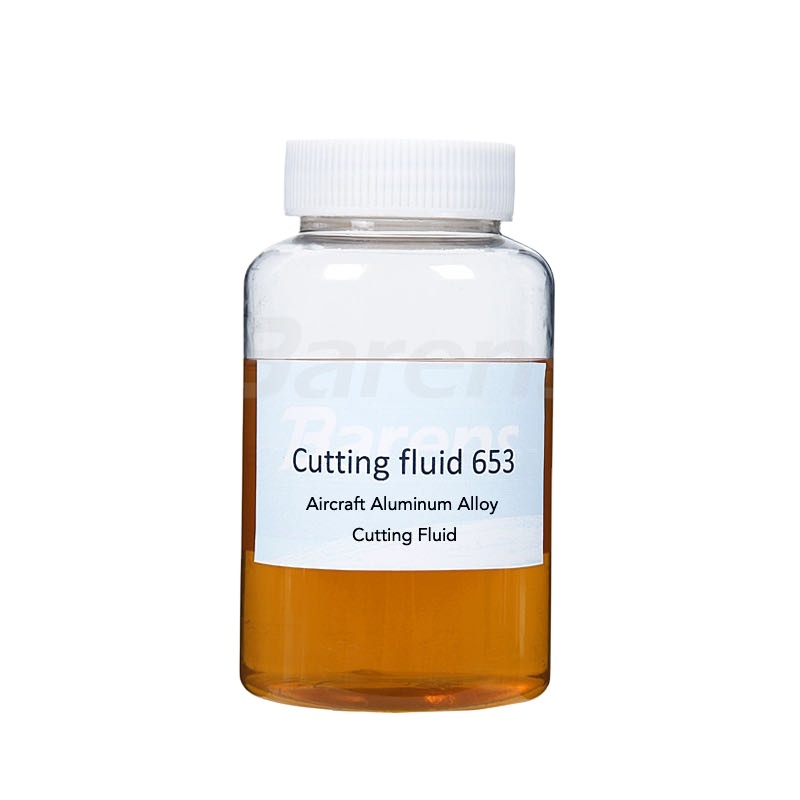Why Cutting and Grinding Fluids Are Essential for Your Machinery: A Comprehensive Guide
Apr 14,2025

Why Cutting and Grinding Fluids Are Essential for Your Machinery
Introduction to Cutting and Grinding Fluids
In the industrial sector, the importance of cutting and grinding fluids cannot be overstated. These specialized fluids play a vital role in the machining process, enhancing both the efficiency and lifespan of machinery. The right cutting and grinding fluids ensure optimal performance, reduce wear on tools, and improve the quality of the finished product. In this article, we delve into the details of why these fluids are essential, their types, benefits, and best practices for usage.
Table of Contents
- Understanding Cutting and Grinding Fluids
- Types of Cutting and Grinding Fluids
- Benefits of Using Cutting Fluids
- Benefits of Using Grinding Fluids
- Choosing the Right Fluid for Your Machinery
- Application Techniques for Cutting and Grinding Fluids
- Maintenance and Care Tips for Cutting Fluids
- Frequently Asked Questions
- Conclusion
Understanding Cutting and Grinding Fluids
Cutting and grinding fluids serve dual purposes: they provide lubrication and cooling during metalworking processes. These fluids reduce heat generation and friction, allowing for smoother cutting or grinding operations. Without these fluids, machinery would face increased wear and tear, leading to lower efficiency and higher costs.
Cutting fluids are primarily used in processes such as turning, milling, and drilling, where a cutting tool removes material from a workpiece. Grinding fluids, on the other hand, are specifically formulated to support grinding operations, where abrasives are used to shape or finish a material.
Types of Cutting and Grinding Fluids
Understanding the different types of cutting and grinding fluids is crucial to making the right choice for your machinery. These fluids can be categorized into several types:
1. Water-Soluble Fluids
Water-soluble cutting fluids are emulsions that mix water with oil and additives. They are widely used for their cooling properties and are economical. However, they require regular maintenance to prevent microbial growth.
2. Oil-Based Fluids
Oil-based fluids, also known as neat oils, consist primarily of mineral oil or synthetic oil. They provide excellent lubrication and are preferred for operations requiring minimal cooling but maximum lubrication.
3. Synthetic Fluids
Synthetic fluids are chemically formulated and do not contain oil. They offer superior cooling and lubrication properties, making them suitable for high-speed machining operations.
4. Semi-Synthetic Fluids
Semi-synthetic fluids combine the benefits of both oil-based and water-soluble fluids. They offer excellent lubrication while also being effective at cooling, making them versatile for various applications.
Benefits of Using Cutting Fluids
Cutting fluids provide numerous advantages that enhance the performance of machining operations:
1. Enhanced Tool Life
By reducing friction and wear on cutting tools, cutting fluids significantly extend their lifespan. This leads to fewer tool changes and lower operational costs.
2. Improved Surface Finish
Cutting fluids help maintain a consistent temperature during machining, ensuring a smoother surface finish. This is critical for precision parts where quality is paramount.
3. Efficient Chip Removal
Cutting fluids aid in chip evacuation during machining processes, preventing chip re-cutting and ensuring a cleaner work environment.
4. Reduced Heat Generation
The cooling properties of cutting fluids minimize heat generation during machining, reducing the risk of thermal damage to both the tool and workpiece.
Benefits of Using Grinding Fluids
Grinding fluids also offer several key benefits that enhance grinding operations:
1. Cooling Effect
Grinding generates significant heat due to the friction between the grinding wheel and the workpiece. Grinding fluids dissipate this heat, preventing overheating and maintaining the integrity of the material.
2. Improved Grinding Wheel Life
Just like cutting tools, grinding wheels experience wear over time. The use of grinding fluids enhances the lifespan of these wheels by reducing wear rates.
3. Better Surface Quality
Grinding fluids can improve the quality of the finished surface by reducing the risk of burns or other surface defects that can occur without adequate cooling.
4. Increased Productivity
With better cooling and lubrication, grinding operations can proceed faster and more smoothly, leading to higher productivity levels in the manufacturing process.
Choosing the Right Fluid for Your Machinery
Selecting the appropriate cutting or grinding fluid depends on several factors, including the materials being machined, the type of machining operation, and the specific equipment used. Here are some guidelines to consider:
1. Material Compatibility
Ensure that the fluid you choose is compatible with the materials you are machining. Some fluids may be more suitable for specific metals, affecting performance and surface finish.
2. Machining Process
Different machining processes have varying requirements for cooling and lubrication. Assessing the specific needs of your operations can help you select the most effective fluid.
3. Environmental Regulations
Consider any environmental regulations that may apply to your operations. Some fluids may require special handling or disposal methods due to their chemical composition.
4. Cost-Effectiveness
Evaluate the cost versus the performance benefits of the fluid. Sometimes, investing in a higher-quality fluid can lead to long-term savings through reduced tool wear and maintenance.
Application Techniques for Cutting and Grinding Fluids
Proper application of cutting and grinding fluids is essential for achieving maximum benefits. Here are some techniques to consider:
1. Flood Application
Flood application involves directly pouring the fluid onto the cutting or grinding area. This method provides excellent cooling but can be wasteful if not managed properly.
2. Mist Application
Mist application uses a misting system to deliver the fluid in fine droplets, reducing waste and providing adequate cooling for certain operations.
3. Manual Application
In smaller operations or specific tasks, manual application may be sufficient. This method allows for precise control over the amount of fluid used.
4. Recirculation Systems
Recirculation systems filter and recycle cutting fluids, reducing waste and ensuring consistent fluid properties throughout the machining process.
Maintenance and Care Tips for Cutting Fluids
To ensure the longevity and effectiveness of cutting and grinding fluids, regular maintenance is crucial. Here are some best practices:
1. Regular Monitoring
Regularly check the concentration of the cutting fluid and adjust it as necessary. This ensures optimal performance and prevents issues related to dilution or contamination.
2. Filtration
Implement a filtration system to remove contaminants from the fluid. This prolongs the life of the fluid and maintains the quality of machining operations.
3. pH Balance
For water-soluble fluids, maintaining a proper pH balance is essential. Frequent testing and adjustment can help prevent microbial growth and fluid degradation.
4. Storage Conditions
Store cutting and grinding fluids in a cool, dry place, away from direct sunlight. Proper storage conditions help maintain the integrity of the fluids over time.
Frequently Asked Questions
1. Can I use the same fluid for both cutting and grinding operations?
While some fluids can serve dual purposes, it is generally recommended to use specific fluids designed for each operation to achieve optimal performance.
2. How often should I change my cutting fluids?
The frequency of changing cutting fluids depends on usage, contamination levels, and fluid condition. Regular monitoring can help determine the right schedule.
3. Are synthetic fluids better than oil-based fluids?
Synthetic fluids often provide superior cooling and lubrication properties, but the best choice depends on your specific machining requirements and budget.
4. What should I do if my cutting fluid smells?
A foul smell typically indicates bacterial growth. Immediate action should be taken to filter or replace the fluid and improve maintenance practices.
5. How do I properly dispose of cutting fluids?
Follow local regulations for disposing of cutting fluids. Many facilities offer recycling options or have specific disposal guidelines for hazardous materials.
Conclusion
Cutting and grinding fluids are essential components in the industrial sector, significantly impacting the efficiency, safety, and longevity of machinery. Understanding the different types of fluids and their benefits empowers businesses to make informed choices that enhance productivity and reduce costs. By selecting the right fluid and implementing effective maintenance practices, you can ensure optimal performance and reliability for your machinery, ultimately leading to a more efficient manufacturing process. The right approach to cutting and grinding fluids can be the difference between success and failure in your operations, making it a priority for every industrial entity.
Contact Us
E-mail:
Weihao@barens.cn
Mobile/Wechat/Whatsapp:
+(86)18595692582
Address:
No.9, Industrial Zone, Wangqu Village, Qinyang City, Jiaozuo City, Henan Province, China
TEL: +86 037186158618
Fax number: +86371-86158608
Contacts: Davi
Mobile/Wechat/Whatsapp: (+86)18595692582
Email: weihao@barens.cn
Contacts: Doris
Mobile/Wechat/Whatsapp: (+86)18211801290
E-mail: Doris@barens.cn
Address:No.9, Industrial Zone, Wangqu Village, Qinyang City, Jiaozuo City, Henan Province, China
Website construction: 300.cn | SEO | Digital card
This site supports IPV4/IPV6 access
COOKIES
Our website uses cookies and similar technologies to personalize the advertising shown to you and to help you get the best experience on our website. For more information, see our Privacy & Cookie Policy
COOKIES
Our website uses cookies and similar technologies to personalize the advertising shown to you and to help you get the best experience on our website. For more information, see our Privacy & Cookie Policy
These cookies are necessary for basic functions such as payment. Standard cookies cannot be turned off and do not store any of your information.
These cookies collect information, such as how many people are using our site or which pages are popular, to help us improve the customer experience. Turning these cookies off will mean we can't collect information to improve your experience.
These cookies enable the website to provide enhanced functionality and personalization. They may be set by us or by third-party providers whose services we have added to our pages. If you do not allow these cookies, some or all of these services may not function properly.
These cookies help us understand what you are interested in so that we can show you relevant advertising on other websites. Turning these cookies off will mean we are unable to show you any personalized advertising.
SAF Coolest v1.3.1.2 设置面板 GAGSD-AGYF-JAAAE-ADE
无数据提示
Sorry, the current column is being updated, please look forward to it!
You can view other columns or returnHome Page



